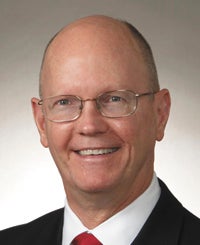Community colleges ‘need every one of us’
Published 9:11 am Monday, March 14, 2011
Column: Terrence Leas, Riverland Comm. College
The national spotlight focused on community colleges recently is not the norm, but it is timely for families and the nation. As the current economic recession drags on and unemployment remains frustratingly high, the issue of jobs tops everyone’s worry list. Economic malaise has also driven an ongoing enrollment surge at the nation’s community colleges — an increase of almost 17 percent nationally. Riverland’s enrollment grew 11.6 percent from 2009-10, and enrollment of under-represented students rose 27 percent.
U.S. Secretary of Education Arne Duncan said that we must educate our way to recovery, and he, like many business, policy and philanthropic leaders, sees community colleges as the affordable, workable solution to get more people ready for the workplace now and into the future.
Good-paying jobs exist, but employers lack workers with the right skills. A recent study of worker trends over the next eight years found a majority of jobs in high-growth industries will require training beyond high school. Community colleges excel in delivering this kind of education. Many of Riverland’s programs successfully place 100 percent of their graduates in jobs. Average job placement for the last decade has been approximately 86 percent for all Riverland programs.
In October, Jill Biden, the wife of the vice president and an instructor at a D.C.-area community college, convened the first-ever White House Summit on Community Colleges.
Joining Biden in addition to Secretary Duncan were President Obama, Melinda Gates and a who’s who of business, education and philanthropic leaders. They came to examine a challenge the president has given community colleges around the nation: double the number of students completing degrees or certificates within the next decade.
Nationally, community colleges educate almost half of all undergraduates. The Minnesota State Colleges and Universities system educates 63 percent of the state’s undergraduates. Community colleges also educate higher proportions of minority, low-income, and adult learners — groups experts say will make up the bulk of our future workforce.
Hard economic times have brought thousands of new students to campuses — deserving and desperate learners who see education as the lifeline to a better future — yet state funding for community colleges continues to decline. Riverland receives about the same state funding as in 2000 — $10 million — and the next two years may be lower than 1996 levels, when the Minnesota State Colleges and Universities system formed! Two-year colleges are the least resourced of all segments of higher education — receiving just 27 percent of total local, state and federal funding.
Unified action is needed to reach the president’s goal. At the federal level, we need more and consistent Pell Grant funding that helps more than 2 million students attend community colleges each year. At the state level, we need Gov. Mark Dayton’s commitment to protect state funding of general education aids. The business community can provide the partnerships and innovative thinking that the White House Summit emphasized and for which Riverland Community College is known.
As the Completion Commitment signed Feb. 17, 2011 states, “We need every one of us.”
Terrence Leas is the president of Riverland Community College.


